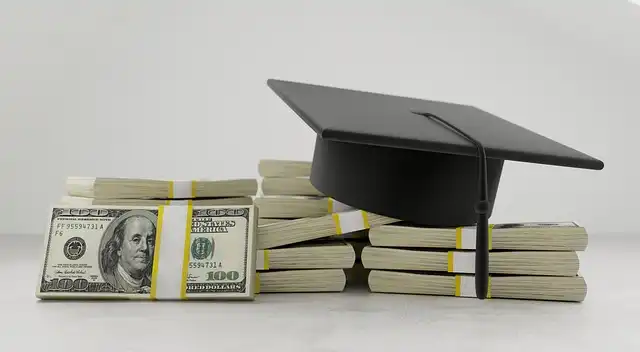Graduate Student Loans: New Restrictions & Impact on Education

New restrictions on federal graduate loans may impact university funding and instructional equity. Caps could limit access for low-income students and worsen healthcare shortages. Unlimited loans also raise concerns about debt and degree value.
Among the numerous significant modifications to government financial aid policy in Congress’s spending plan settlement costs, one could have an underreported however outsize impact on both university funds and instructional equity: brand-new restrictions on federal lendings for graduate students.
“Individuals have actually constantly exaggerated the degree to which help for undergraduate trainees has led to tuition boosts, and that proof appears extremely weak outside the for-profit industry. “You desire people to believe much more very carefully regarding their choices, but you do not want poor students to not be able to become medical professionals … so the concern ends up being, what are the suitable limits?”
Eliminating the Grad PLUS finance would also soothe the graduate financing market of among its primary rivals. Ken Ferreira, president of the Eastern Organization of Pupil Financial Aid Administrators, said he fretted that could cause higher interest rates and a lot more hostile repayment plans.
Concerns Over Loan Restrictions
Conservatives aren’t the only ones cynical of the current graduate financing system. Sandy Baum, a nonresident elderly other at the liberal-leaning Urban Institute and a long time scholar of student financial obligation, believes that limitless fundings have actually enabled a lot more students to borrow heavily to pay for degrees whose financial returns are typically uncertain. Graduate students comprise about 15 percent of all higher education registration in the united state however account for virtually 40 percent of all superior pupil financial obligation, according to a 2020 report from the Congressional Budget Plan Workplace.
For trainees partway through a clinical or legislation degree that depend on federal car loans, the caps could suggest the end of their education if they can’t qualify for a personal funding– or can compel them to obtain from dubious loan providers at high rates of interest to avoid leaving their program with a great deal of financial debt and no degree.
Impact on Medical and Law Degrees
Sandy Baum, a nonresident elderly fellow at the liberal-leaning Urban Institute and a longtime scholar of pupil financial debt, believes that unrestricted lendings have actually made it possible for a lot more students to obtain greatly to pay for levels whose financial returns are usually suspicious. Grad pupils make up regarding 15 percent of all greater education enrollment in the U.S. however account for virtually 40 percent of all outstanding trainee financial obligation, according to a 2020 report from the Congressional Budget Workplace.
Baum claimed the current “infinite loaning” policy is “not optimum” if it motivates students to enter into thousands of hundreds of bucks of financial obligation to get a master’s in a field like creative writing or ecological researches.
Graduate pupils likewise have a lot less access than undergraduates to public and institutional aid, implying reduced- and middle-class trainees virtually constantly have to borrow.
Low-income trainees with poor family members and personal credit could be left with no pathway to a postgraduate degree if that takes place. And some graduate programs that channel employees into high-need markets, like community service and mentor, could see applicant shortages worsen.
“There are great deals of master’s degrees programs that just do not settle extremely well. If we tighten accessibility to several of those programs, that’s not so awful in my point of view,” she said. “You desire individuals to believe a lot more carefully regarding their choices, but you don’t want bad students to not be able to come to be doctors … so the inquiry ends up being, what are the ideal limits?”
UNE head of state James Herbert claimed he’s not worried that car loan caps will trigger registration to go down; admission, he said, is incredibly competitive. But he is worried that the candidate swimming pool will certainly reduce– and end up being whiter and wealthier– if the proposed $200,000 cap on government financings for specialist schools passes.
Graduate Program Funding
Some colleges, Kelchen claimed, rely heavily on their graduate programs for tuition earnings– specifically big private institutions such as New york city College and the University of Southern California, both of which register more graduate than undergraduate trainees. For some smaller universities that have actually battled to keep undergraduate registration, consisting of Simmons University in Boston and Nova Southeastern in Florida, enhancing graduate program offerings has actually become an essential earnings stream.
Kelchen has conducted researches examining the connection between federal lendings and tuition prices at company, medical and regulation schools, and he discovered that accessibility to the previous had no impact on the last. However others have actually discovered a relationship: A 2023 study led by scientists at Vanderbilt, Columbia and Brigham Youthful Colleges utilized data from Texas graduate programs and discovered that for every extra buck a graduate student borrowed from the federal government, their college elevated tuition by 64 cents.
The University of New England, a private nonprofit establishment in Maine, is home to the only medical college in the state. For the past years, applications to its University of Osteopathic Medicine have surged and registration has actually grown steadily. The college increased its inbound course size from 165 to 200 this year and simply finished building a brand-new training facility.
Federal graduate finances can be made use of for any type of postgraduate degree, consisting of Ph.D. s. Master’s levels and specialist levels, such as those in legislation and medicine, often tend to be much a lot more expensive. Graduate students likewise have much less access than undergraduates to public and institutional help, meaning reduced- and middle-class pupils almost always have to obtain.
“A great deal of establishments began master’s level programs as cash cows, and it wouldn’t be so negative if they became much less lucrative,” Baum claimed. “Individuals have always overemphasized the degree to which help for undergraduate students has actually brought about tuition boosts, which proof seems very weak outside the for-profit field. But also for graduate programs, I assume there’s definitely proof that it’s contributed to the boost in high-cost levels.”
The Senate variation of the reconciliation expense, which President Donald Trump has actually prompted Congress to pass as early as following week, would cover professional degree finances at $200,000 and all other graduate loans at $100,000. Both your house and the Us senate likewise proposed entirely removing Graduate PLUS, an unsubsidized government finance without any borrowing limit that has aided pupils from small histories pay for academic degrees because 2006.
Advocates of the loan program say that growth suggests its success in increasing gain access to; its doubters state it’s due to the fact that universities saw a possibility to increase registration in very rewarding programs.
Comparable difficulties might arise for legal representatives, that may be incentivized to work at large law firms with six-figure incomes in order to settle financial obligation rather than in public defenders’ workplaces or lawful companies that serve bad areas.
Growth of Graduate Programs
Herbert isn’t the only one worried concerning that effect. Bruce Scott, head of state of the American Medical Organization, wrote in a declaration earlier this month that the proposed loan cap, combined with plans to limit eligibility for the Public Solution Funding Mercy program, would “get worse an expanding physician workforce lack that is already making it difficult for individuals to gain access to timely care.”
For trainees who still pick to attend, Herbert said requiring them to turn to exclusive lending institutions might have downstream repercussions for main medical care in high-need areas. With repayment a pressing worry, pupils could significantly turn to specialty treatment, which is a lot more available and lucrative to fewer patients.
At UNE, medical institution tuition is currently inching towards $70,000 a year, or about $280,000 for the typical four-year run. That’s about the national average for clinical institutions and doesn’t include fees or living prices, which graduate pupils commonly utilize lendings to pay for.
“Initially glimpse, maybe $200,000 feels like an adequate cap. Running a medical school, especially for an independent college, is extremely pricey,” he said. “Unlike undergraduate financial assistance and Pell Grants, policymakers and most individuals as a whole don’t really recognize the function that graduate finances play in making that education and learning possible and affordable.”
Private vs. Federal Loans
In the two decades considering that Graduate PLUS was implemented, the variety of Americans with a postgraduate level has actually increased, according to 2021 Demographics information. Robert Kelchen, a professor of academic leadership and plan researches at the College of Tennessee at Knoxville, said federal financial investments in graduate financings– specifically the stipulation that trainees might borrow endless quantities– resulted in a “huge development” in graduate programs.
Kelchen stated trainees might transform to private lenders, yet the benefit of government lendings is that they do not take individual credit right into account. They additionally do not currently consider a student’s selected level program or its predicted profits end results, the latter of which the Republican bill would make pertinent.
1 affect higher education2 financial aid
3 graduate loans
4 loan restrictions
5 student debt
6 tuition costs
« College Credit Transfer: Student Experiences & SuccessStanford University: Budget Cuts, Layoffs & Endowment Challenges »
